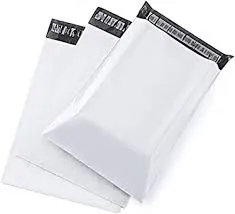disposable meal prep containers
The Rise of Disposable Meal Prep Containers Convenience Meets Sustainability
In today’s fast-paced world, meal prep has become an essential strategy for many individuals looking to maintain a healthy diet while managing their busy schedules. The emergence of disposable meal prep containers has significantly revolutionized this practice, offering convenience without compromising food safety. However, with the growing emphasis on sustainability, it’s crucial to explore how these containers fit into both convenience and eco-friendliness.
Convenience at Its Best
Disposable meal prep containers are designed for those who crave efficiency and practicality. One of the primary benefits is their time-saving nature. Rather than spending valuable hours washing and sanitizing reusable containers, individuals can simply use a new container for each meal. This is particularly advantageous for busy professionals, parents, and students who may not have the time or inclination to deal with tedious cleanup processes.
Additionally, these containers are ideal for portion control. They come in various sizes, allowing users to prepare balanced meals that fit their dietary needs. With individual servings, it’s easier to monitor caloric intake and nutritional balance, making them a favorite for fitness enthusiasts and health-conscious individuals.
The variety of designs and materials available also enhances their appeal. Some models come with compartments for different food items, preventing sogginess and ensuring that flavors remain distinct. Others can withstand microwave and freezer temperatures, making them versatile for any meal prep scenario.
A Growing Concern for Sustainability
While disposable meal prep containers present significant advantages, concerns about environmental impact cannot be overlooked. Traditional single-use plastics contribute to an alarming increase in waste, with millions of tons ending up in landfills and oceans each year. This dilemma raises questions about the sustainability of such conveniences.
disposable meal prep containers

In response, manufacturers are increasingly focusing on producing eco-friendly disposable meal prep containers. Options made from biodegradable materials, compostable substances, and recycled plastics are becoming more prevalent. These alternatives minimize environmental impact while still providing the convenience of typical disposable containers.
Compostable containers, for instance, break down naturally and enrich the soil, offering a sustainable option for eco-conscious consumers. However, it’s vital for users to understand the proper disposal methods for these products to genuinely benefit the environment. Composting facilities are not universally available, meaning some compostable containers may still end up in landfill.
Making Informed Choices
When opting for disposable meal prep containers, consumers should prioritize sustainable options. Look for products labeled as BPA-free, recyclable, or compostable to ensure a reduced carbon footprint. Moreover, purchasing in bulk can help minimize packaging waste and prove cost-effective over time.
Another crucial aspect to consider is the temperature resilience of these containers. Opting for containers that can handle both hot and cold foods will allow for greater versatility in meal prep. It's essential to check the manufacturer's guidelines to avoid harmful chemical leaching during heating.
Conclusion
In conclusion, disposable meal prep containers have emerged as a popular solution for modern meal management, blending convenience with practicality. While there is a pressing need to address environmental concerns associated with traditional disposable products, the rise of eco-friendly options provides a promising avenue for mindful consumers. By making informed choices and opting for sustainable materials, individuals can enjoy the benefits of disposable meal prep containers while concurrently taking steps towards a greener planet. Ultimately, the convergence of convenience and sustainability can pave the way for a healthier lifestyle, both personally and globally.
-
The Best Uses for Small Trash Bags in Daily LifeNewsJul.01,2025
-
Stylish Reusable Grocery Bags TrendsNewsJul.01,2025
-
Shipping Advantages of Using Bubble Envelopes BulkNewsJul.01,2025
-
How Compostable Mailing Bags Reduce Environmental ImpactNewsJul.01,2025
-
Environmentally - Friendly Bulk Poly MailersNewsJul.01,2025
-
Eco Friendly Custom Laminated Tote BagsNewsJul.01,2025
-
Have the freedom of customizing your custom mailers any way you want! Our dedicated packaging support will help deliver you the mailing experience you need to elevate your shipping experience to the next level! Start making a strong impression on your customers and stand out from your competitors! -
LIYA uses high quality raw materials which directly purchased from large enterprises domestic and overseas such as PetroChina, Sinopec, Sabic, Equate, ExxonMobil, Dow Chemical, Total, and Borouge, ensuring the price advantage and quality of the raw materials. -
LIYA uses high quality raw materials which directly purchased from large enterprises domestic and overseas such as PetroChina, Sinopec, Sabic, Equate, ExxonMobil, Dow Chemical, Total, and Borouge, ensuring the price advantage and quality of the raw materials.





